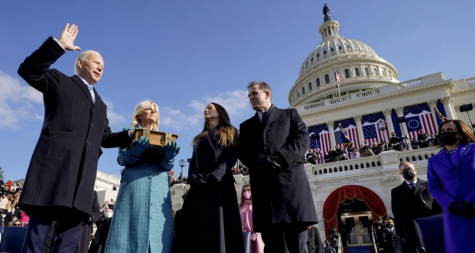Once More Unto the Breach?
April 7, 2020
Over the past few months, the Trump Administration has brought the United States to the brink of war with Iran. A period of heightened aggression between the countries brought us to January 3, when an American drone strike at the international airport in Baghdad killed Iranian Major General, Qasem Soleimani. He was, in essence, the most senior military commander in Iran. Despite comments from Iran’s foreign minister, Javad Zarif, that Iran has remained willing to negotiate, Trump’s decision to escalate the conflict has left us uncertain as to the future between Iran and the United States.
Prior to this incident, on December 27, an Iranian-backed Shia militia group launched a missile attack in Northern Iraq, killing an American contractor and injuring several U.S. troops. The resulting American casualties marked the beginning of this period of overt belligerence. Subsequently, the Pentagon provided President Trump with a list of options in response to Iran’s actions. Among several less provocative choices lied an extreme one, intentionally presented to the President in an effort to make the preferences of the Defense Department seem more palatable. On this occasion, President Trump opted to authorize airstrikes against the Shia militia group responsible for the death of the American contractor, killing at least twenty-five of their fighters.
Following the incident, Trump watched angrily from his Mar-a-Lago Club in Palm Beach, Florida, as Iranian-backed protestors stormed the U.S. Embassy in Baghdad. Their scaling of walls and anti-American chants further enraged President Trump, who could not help but recall the 2012 Benghazi attack, which resulted in the death of four Americans. The Benghazi attack on the American Consulate in Libya had been a rallying cry during Trump’s campaign, who lambasted Clinton’s handling of it as Secretary of Defense. To disregard the acts of Iranian-backed protestors and militia groups over the past week, to President Trump, would constitute a sign of weakness and hypocrisy. And so, seething with anger and intent on conveying an absolute intolerance with acts of violence against American citizens and interests, Trump called for his list of options once again. On this occasion, he chose the extreme option.
For the first time since World War II, the United States killed a major military leader in a foreign country. Shocking officials and aides alike, Trump’s decision to kill Soleimani has had potentially dire consequences. Specifically, the Iraqi Parliament voted unanimously to oust the more than five thousand American troops from their country, jeopardizing the six-year fight against ISIS. Furthermore, the death of Soleimani has united the deeply fractured Iranian population against the United States; millions of Iranians saw Soleimani as their protector from existential threats. Trump’s continuing threats to bomb cultural sites and extend sanctions has only broadened anger and hostility to the extent that such threats have been viewed by both critics and supporters of President Trump as threats to commit war crimes.
The White House has made repeated efforts to rationalize President Trump’s decision to kill Soleimani. Secretary of State Mike Pompeo suggested that “we would have been culpably negligent had we not taken this action.” Additionally, the Administration has referenced the American blood on Soleimani’s hands, who was responsible for the death of hundreds of American soldiers over the course of his career. Be that as it may, this had been the case for years under both Presidents Bush and Obama, who decided against killing Soleimani. On the other hand, the United States has also worked with Soleimani in a loose coalition to fend off common enemies such as ISIS and the Taliban.
That said, the most logical justification seemed to be intelligence reports suggesting that Soleimani was about to launch another attack on American interests. This, according to the Trump Administration, was revealed by his travels in the days leading up to his death. However, contradictory reports suggested that Soleimani had been asked to return to Iran by Iran’s supreme leader, Ayatollah Khamenei, and that he had not been authorized to conduct any attacks. This belies the question of how “imminent” the attacks were.
The decision made by President Trump made the U.S.’s position in the Middle East far more complicated, enraging Iranians and escalating tensions between the two. Despite claims that the death of Soleimani will bring about positive changes, American troops in the Middle East have been forced to halt the fight against ISIS in order to defend against retaliatory attacks. Tehran has also announced a major curtailment in compliance with the 2015 nuclear deal.
As many of us students are nearing the age to be eligible for the draft, trending predictions of a WWlll came as a shock. Such concerns came about despite Trump’s campaign promise to end long lasting wars that went on. While tensions are beginning to subside, we ought to consider the possibility of a dive once more unto the breach.


















